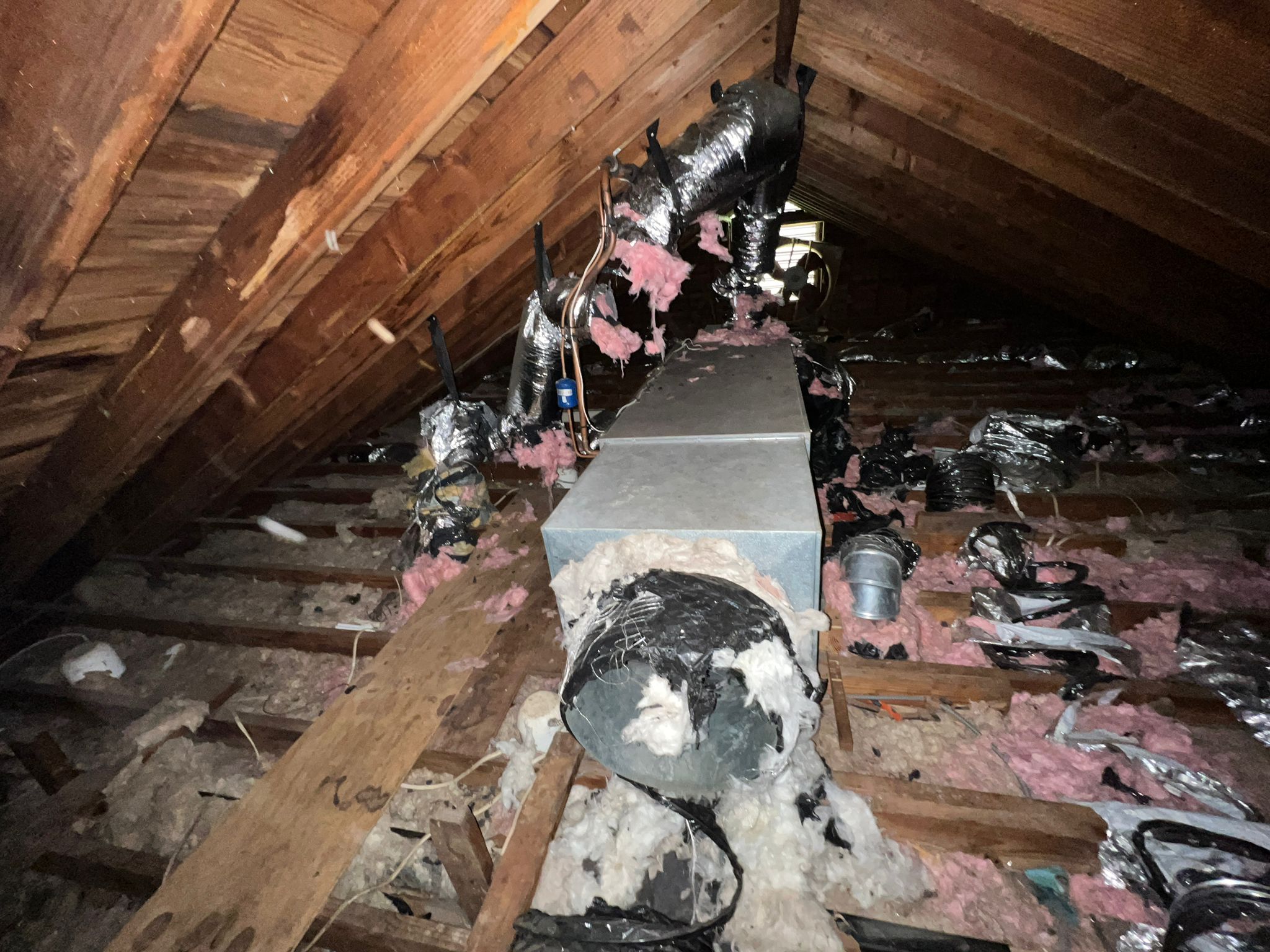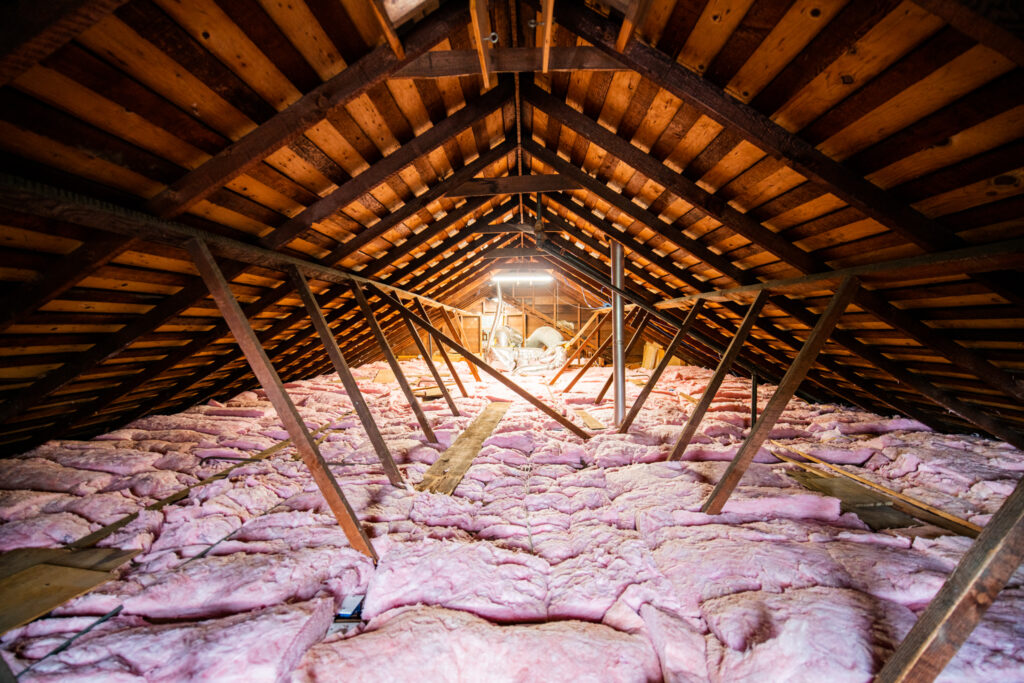Discover the Different Sorts Of Attic Insulation and Their Distinct Advantages for Your Home's Power Effectiveness

Fiberglass Insulation
Fiberglass insulation is just one of the most generally used products for attic room insulation due to its outstanding thermal efficiency and cost-effectiveness. Made up of small glass fibers, this product effectively catches air, producing an insulating barrier that aids keep constant indoor temperatures. Its high R-value per inch makes it especially reliable at withstanding warmth transfer, which is essential for power preservation in homes.
Installation of fiberglass insulation is relatively uncomplicated, typically available in batts or loose-fill kinds, suiting different attic room arrangements. Additionally, it is non-combustible and immune to dampness, decreasing the danger of mold development. This toughness adds to its long life, making fiberglass a sensible long-term investment for house owners.
Furthermore, fiberglass insulation is often manufactured from recycled materials, which enhances its eco-friendliness. The material can also add to soundproofing, decreasing noise transfer between rooms. While it is necessary to put on safety gear during installation to avoid irritation from the fibers, the general advantages of fiberglass insulation, including energy savings and environmental factors to consider, make it a preferred option for enhancing attic efficiency and advertising a comfy living environment.
Spray Foam Insulation
Spray foam insulation is a highly reliable alternative for attic insulation, known for its remarkable air sealing and thermal performance. This innovative insulation material is made up of a combination of isocyanate and polyol material, which, when combined, broadens rapidly to fill up voids and cavities in the attic space. Its capacity to follow different surfaces makes sure a continuous obstacle versus air leaks, considerably minimizing heat loss throughout cooler months and heat gain throughout warmer seasons.
One of the vital advantages of spray foam insulation is its high R-value per inch, which suggests it gives exceptional thermal resistance in a fairly slim application. This is specifically useful in attics where room is usually restricted. Additionally, spray foam can aid reduce wetness build-up, reducing the danger of mold and mildew and mildew development, which can be detrimental to both the framework and indoor air top quality.
While the preliminary cost of spray foam insulation may be greater than typical choices, its long-term energy financial savings, coupled with boosted comfort and enhanced home value, make it a rewarding investment for home owners seeking improved power efficiency. Attic Insulation DFW. Generally, spray foam insulation attracts attention as an efficient solution for optimizing attic insulation
Cellulose Insulation

Cellulose insulation is a prominent option for attic room insulation, mainly composed of recycled paper items treated with fire resistants. This eco-friendly choice is click here to read known for its superb thermal efficiency, efficiently lowering heat transfer in both summer and winter season. The dense structure of cellulose enables it to fill up voids and voids in attic room areas, offering a smooth barrier versus air leakages.
Among the significant advantages of cellulose insulation is its capacity to resist mold and bugs, owing to the fire retardant therapies utilized during manufacturing. Additionally, it boasts a high R-value per inch, which equates right into remarkable power efficiency. Homeowners can anticipate lower heating and air conditioning costs as an outcome of improved insulation.
Setup is typically completed with blowing loosened cellulose right into the desired area, permitting a quick and reliable process. This approach additionally reduces interruption to the existing framework. Furthermore, cellulose insulation has a relatively low environmental impact, as its production process utilizes recycled materials, adding to lasting structure techniques.
Rock Wool Insulation
Among the various choices for attic room insulation, rock woollen, also called mineral woollen, attracts attention due to its outstanding thermal and acoustic performance. Made from all-natural or recycled products, rock wool is produced by melting rock and rotating it right into fibers, causing an item that offers superb insulation buildings.
Among the substantial benefits of rock wool insulation is its high R-value, which indicates its efficiency in resisting warmth circulation. This particular not only improves power performance yet likewise adds to maintaining a comfy interior temperature year-round. Additionally, rock woollen is naturally fireproof, making it a much safer option for homes as it can hold up against high temperatures without melting or releasing harmful fumes.
Additionally, rock wool insulation stands out in soundproofing abilities, properly decreasing noise transmission between spaces and from outside sources. In general, rock woollen insulation gives a comprehensive option for improving energy performance, security, and comfort in domestic settings.
Radiant Barrier Insulation
Radiant obstacle insulation acts as an efficient remedy for reducing warmth transfer in attics, specifically in warmer climates. This kind of insulation jobs click to investigate by mirroring convected heat away from living rooms, thereby decreasing the quantity of heat that goes into a home during heat - Attic Insulation DFW. Usually composed of an extremely reflective material, such as light weight aluminum foil, radiant barriers are set up in attics, facing the roofing system, where they can obstruct inbound warmth from the sun
The primary advantage of glowing obstacle insulation is its ability to reduced air conditioning costs. By showing warmth as opposed to absorbing it, glowing barriers can aid keep an extra steady interior temperature level, lowering the work on cooling systems. This effectiveness translates right into reduced power expenses and enhanced convenience for house owners.
In addition to energy cost savings, radiant barriers can likewise add to enhanced indoor air quality. By reducing warmth accumulation, they aid decrease humidity degrees, which can protect against mold and mildew growth and boost general air flow. When set up correctly, radiant barrier insulation can be a very useful enhancement to any type of energy-efficient home, making it a worthy consideration for homeowners looking to boost their attic room insulation approach.
Final Thought
In conclusion, recognizing the various kinds of attic insulation-- fiberglass, spray foam, cellulose, rock wool, and radiant barriers-- makes it possible for property imp source owners to make educated choices relating to power efficiency. By choosing the proper insulation material, substantial decreases in energy expenses can be attained, along with enhancements in indoor comfort.

In conclusion, understanding the numerous types of attic insulation-- fiberglass, spray foam, cellulose, rock woollen, and radiant obstacles-- allows homeowners to make enlightened decisions concerning power effectiveness.